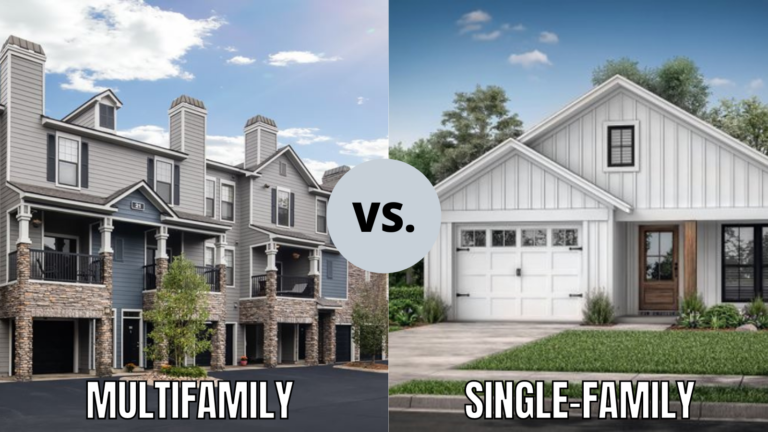If you’re just getting started in understating the multifamily investing space, it may help to compare and contrast single-family rentals to multifamily properties. Most of us have purchased a home in our lives and maybe even rented it out to someone, so this comparison serves as a useful way to learn more about multifamily investing in a way you’re already familiar with.
Here are some ways that single-family rentals and multifamily properties compare and contrast:
Establishing Value
- The value of a single-family home is established by comparing it to other similar properties. For example, comparing a 3 bedroom/1 bath home to other 3 bedroom/1 bath homes within a tight radius of the property.
- Multifamily properties are valued based on their profitability and market conditions. It’s evaluated much more as a business, not just a property. It has income, expenses and usually staff that manage the property.
Investing Team
- Purchasing a single-family home as an investment property is usually done by an individual that may just be getting started or have some experience doing so already. These individuals are typically not in real estate full time and do it as a way to provide extra income.
- Multifamily properties are purchased by an investment team made up of experienced general partners that directly oversee the purchase. There are also many other parties that are brought in to assist and provide advice, including real estate and SEC attorneys, mortgage brokers, property managers, due diligence teams, and of course… investors.
Day-to-Day Management
- Single-family rentals are usually managed by an individual, usually the landlord. This approach to management takes time and is certainly not what one would consider passive.
- A multifamily property is managed by a professional property manager with experience in running the day-to-day activities of such a property. They use their expertise to run it well, freeing up the time and attention of the investor.
Economies of Scale
- Single-family rentals can be quite profitable with the right approach. It’s not unheard of to be earning $500 a month in income from a rental. However, it’s just one property. With multifamily properties, such profit can be multiplied across 100 or more units, making the positive impact much greater for the investor.
- Economies of scale also apply to property management. A large property can support hiring professional property managers that know how to manage a property and help investors achieve their goals.
- Fixed interest debt is also utilized to purchase a property much larger than what could be done utilizing cash alone. For example, $3 million in cash can easily buy a $10 million property that has great potential. That’s much larger than what the cash alone could provide. This debt is another example of the economies of scale we can utilize to make a great investment for investors.
There are more similarities and differences, but the ones above are some of the biggest. In summary, investing in larger properties provides many advantages that simply cannot be attained through buying single-family properties. This is why investing in large properties with experienced partners is so financially attractive. It’s also why we believe it’s such a great space to operate in.


